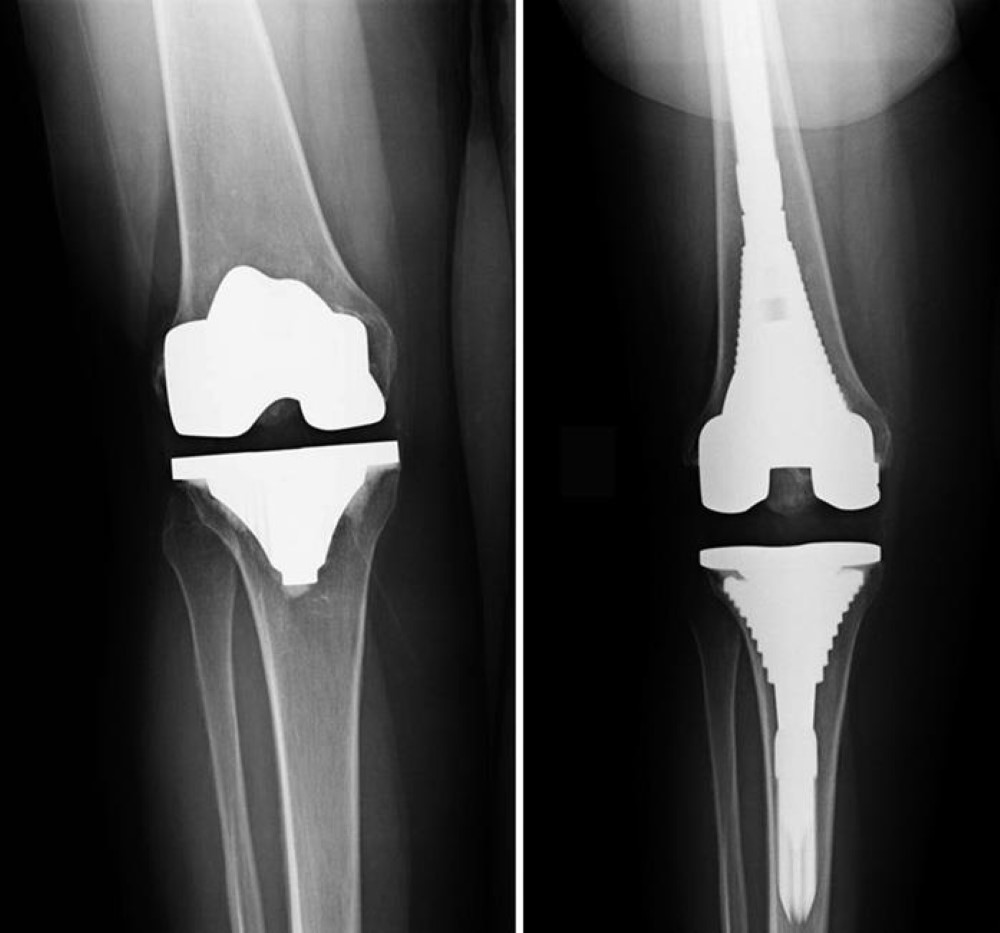Knee Conditions
Revision Knee Replacement
Revision Knee Replacement means that part or all of your previous knee replacement needs to be revised. This operation varies from very minor adjustments to massive operations replacing significant amounts of bone. The typical knee replacement replaces the ends of the femur (thigh bone) and tibia (shin bone) with plastic inserted between them and usually the patella (knee cap).

Why does a knee replacement need to be revised?
Pain is the primary reason for revision. Usually the cause is clear but not always. Knees without an obvious cause for pain in general do not do as well after surgery.
Plastic (polyethylene) wear – This is one of the easier revisions where only the plastic insert is changed.
Instability – This means the knee is not stable and may be giving way or not feel safe when you walk. Loosening of either the femoral, tibial or patella component – This usually presents as pain but may be asymptomatic. It is for this reason why you must have your joint followed up for life as there can be changes on X-ray that indicate that the knee should be revised despite having no symptoms.
Infection- usually presents as pain but may present as swelling or an acute fever.
Osteolysis (bone loss). This can occur due to particles being released into the knee joint that result in bone being destroyed.
Stiffness- This is difficult to improve with revision but can help in the right indications.
Pre-Operation
- Your surgeon will send you for routine blood tests and any other Investigations required prior to your surgery.
- You will be asked to undertake a general medical check-up with a physician.
- You should have any other medical, surgical or dental problems attended to prior to your surgery-.
- Make arrangements for help around the house prior to surgery.
- Cease aspirin or anti-inflammatory medications 10 days prior to surgery as they can cause bleeding.
- Cease any naturopathic or herbal medications 10 days before surgery.
- Stop smoking as long as possible prior to surgery.
Day of Surgery
- You will be admitted to the hospital usually on the day of your surgery
- Further tests may be required on admission
- You will meet the nurses and answer some questions for the hospital records
- You will meet your Anesthetist, who will ask you a few questions
- You will be given hospital clothes to change into and have a shower prior to surgery
- The operation site will be shaved and cleaned
- Approximately 30 minutes prior to surgery, you will be transferred to the operating room
Surgical Procedure
Each knee is unique and knee replacements take this into account by having different sizes for your knee. If there is more than the usual amount of bone loss, sometimes extra pieces of metal or bone are added.
Surgery is performed under sterile conditions in the operating room under spinal or general anesthesia. You will be on your back and a tourniquet applied to your upper thigh to reduce blood loss. Surgery takes approximately two hours.
The patient is positioned on the operating table and the leg prepped and draped.
A tourniquet is applied to the upper thigh and the leg is prepared for the surgery with a sterilizing solution.
An incision around 7cm is made to expose the knee joint.
The bone ends of the femur and tibia are prepared using a saw or a burr.
Trial components are then inserted to make sure they fit properly.
The real components (Femoral & Tibial) are then put into place with or without cement.
The knee is then carefully closed and drains usually inserted, and the knee dressed and bandaged.

